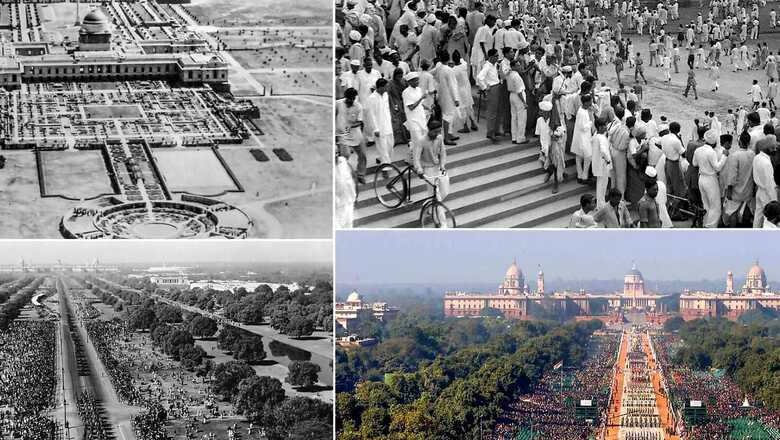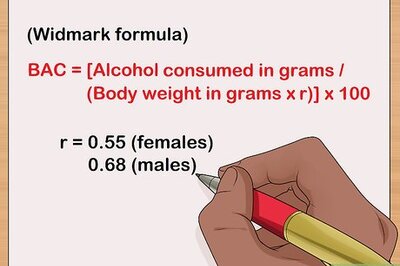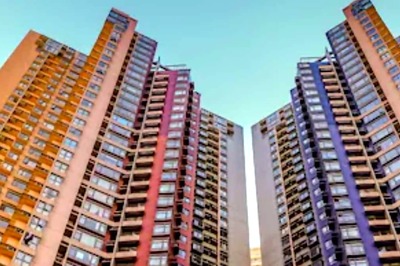
views
Prime Minister Narendra Modi is set to inaugurate the redeveloped Central Vista Avenue on Thursday. Rajpath, a three-km stretch from Vijay Chowk to India Gate, which is often linked with Delhi’s identity and hosts Republic Day parade every year, will now be known as Kartavya Path (Path of Duty).
The history of Rajpath is over 100 years old and it goes back to the time when Delhi was being developed as the capital. The three-km stretch has undergone several changes throughout these years. Here’s a look at history of Rajpath and how it came into existence.
Kingsway
In 1911, the colonial rulers decided to shift its capital to Delhi from Calcutta (now Kolkata). Given Delhi’s location, Biritishers thought it would be easier and more convenient to rule India. While the work was on for the new capital, Rajpath (then called Kingsway) was built as a ceremonial boulevard in around 1920. Designed by Edwin Lutyens and Herbert Baker, the architects of the new capital, there were huge lawns, canals and trees on both sides of the avenue. It was called Kingsway in the honour of Emperor of India George V who announced the decision to move the capital in 1911. New Delhi as administrative capital of British India was inaugurated in 1931. Two years later, India Gate was unveiled in 1933.
Here’s a Bird’s Eye Look at Sprawling Walkways, Canals of Central Vista Avenue
The new Central Vista Avenue pic.twitter.com/zFI4UK7n2k— Aman Sharma (@AmanKayamHai_) September 7, 2022
Rajpath
After India got its independence, Kingsway was renamed as Rajpath and since then the 3-km stretch has been hosting Republic Day parade every year. Some modifications were done on Central Vista Avenue like the new trees were planted.
In his recent 15th August speech, Prime Minister Narendra Modi had stressed on the abolition of symbols relating to colonial mindset. In the run up to 2047, the PM had also stressed upon the importance of duties. Both these factors can be seen behind the naming of “Kartavya Path, sources had added.
ALSO READ: ‘Kingsway’ to ‘Kartavya Path’: PM Modi’s Fight for Freedom from Colonial Past Continues | Recap of Other Moves
“We carried forward colonial mindset after Independence. Rajpath conveys you have come for ‘Raj’ (rule). The PM said that country is celebrating Azadi ka Amrit Mahotsav and we have to end imperialistic policies, symbols. So, the name of Rajpath has been changed to Kartavya Path,” said Union Minister Meenakashi Lekhi.
Kartavya Path
The Central Vista Avenue will soon be thrown open to the public after 20 months of hard work. This is the first project that has been completed under the Modi government’s ambitious Central Vista redevelopment plan whose construction work started in February last year. The redevelopment project of the Central Vista — the nation’s power corridor — envisages a new triangular Parliament building, a common central secretariat, revamping the three-km Rajpath, a new prime minister’s residence and office, and a new vice-president’s enclave.
Considered to be the most popular public space in the city, the redeveloped stretch has red granite walkways spreading around 1.1 lakh square metre with greenery all around, more than 133 light poles along the Rajpath, 4,087 trees, 114 modern signages and stepped gardens.
ALSO READ: Revamped Central Vista Ready: Check Before-and-After Pics as Rajpath Opens to Public this Week
According to an official document, there are more than 900 light poles, including those in the gardens and along the Rajpath between the Rashtrapati Bhavan and the India Gate, a move aimed at making the Central Vista more pedestrian-friendly round the clock. Eight amenity blocks have been built while four pedestrian underpasses have been constructed in the entire stretch that has 422 red granite benches.
Along the Rajpath, new red granite walkways spreading 1,10,457 square metre have been created, replacing bajri sand that lined the ground earlier. As many as 987 concrete bollards have been installed on the Rajpath. A total of 1,490 modern-look manholes have replaced the earlier ones.
(With PTI inputs)
Read all the Latest News India and Breaking News here


















Comments
0 comment